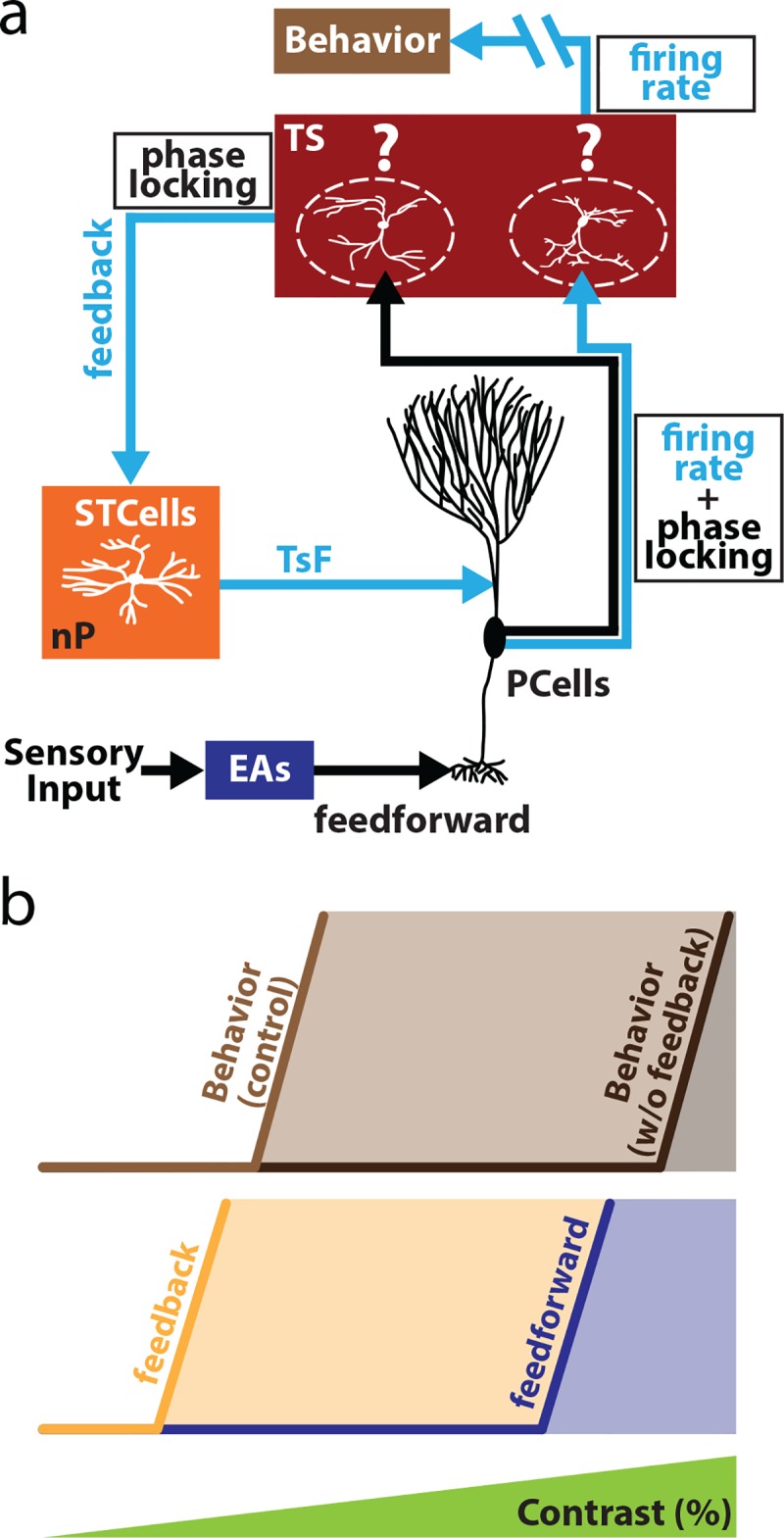Fig 8. Summary of results.

(a) Relevant circuitry showing ELL PCells receiving feedforward input from EAs and projecting to TS. It is assumed that some neurons within TS decode information carried by PCell firing rate and in turn project to higher brain areas to give rise to behavior. It is further assumed that a separate group of neurons within TS project back to ELL via nP STCells and receive phase locking information from PCells, thereby forming the closed feedback loop that is necessary to elicit increases in firing rate and behavioral responses to low contrasts. (b) Summary of the relative contributions of feedback and feedforward inputs toward determining behavioral responses as a function of contrast. For low contrasts (<15%) and under control conditions, feedback is necessary to elicit changes in PCell firing rate and behavior. However, for higher (>40%) contrasts, feedforward input is sufficient to elicit increases in PCell firing rate and behavior. This is because our results show that, after complete feedback inactivation, both PCell and behavior tended to be only elicited for contrasts for which EAs increased their mean firing rates. EA, electrosensory afferent; ELL, electrosensory lateral line lobe; nP, nucleus praeeminentialis; PCell, pyramidal cell; STCell, stellate cell; TS, torus semicircularis.
